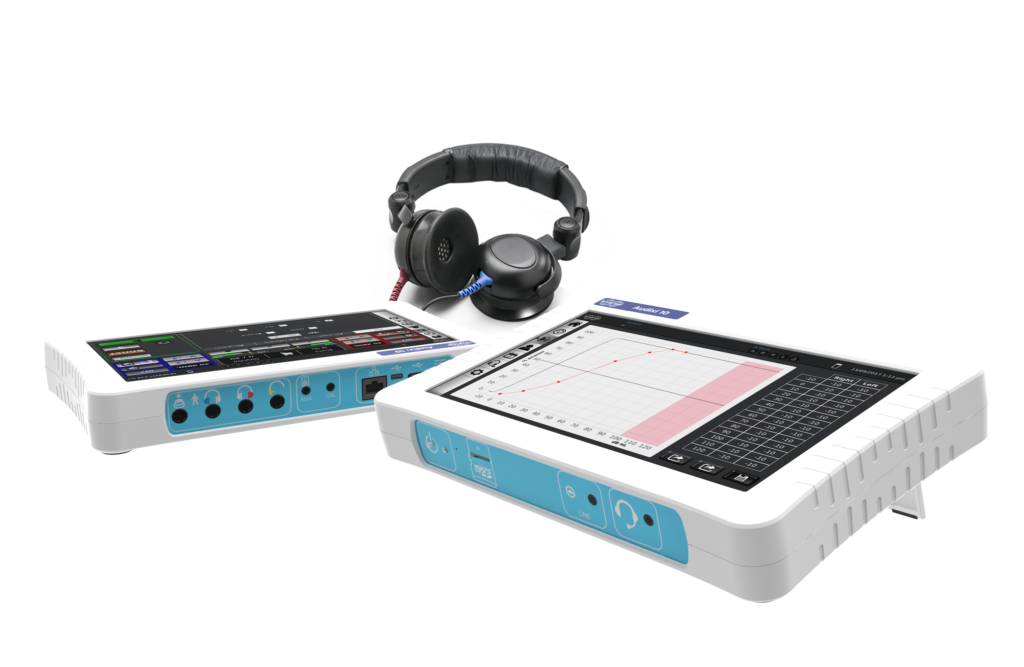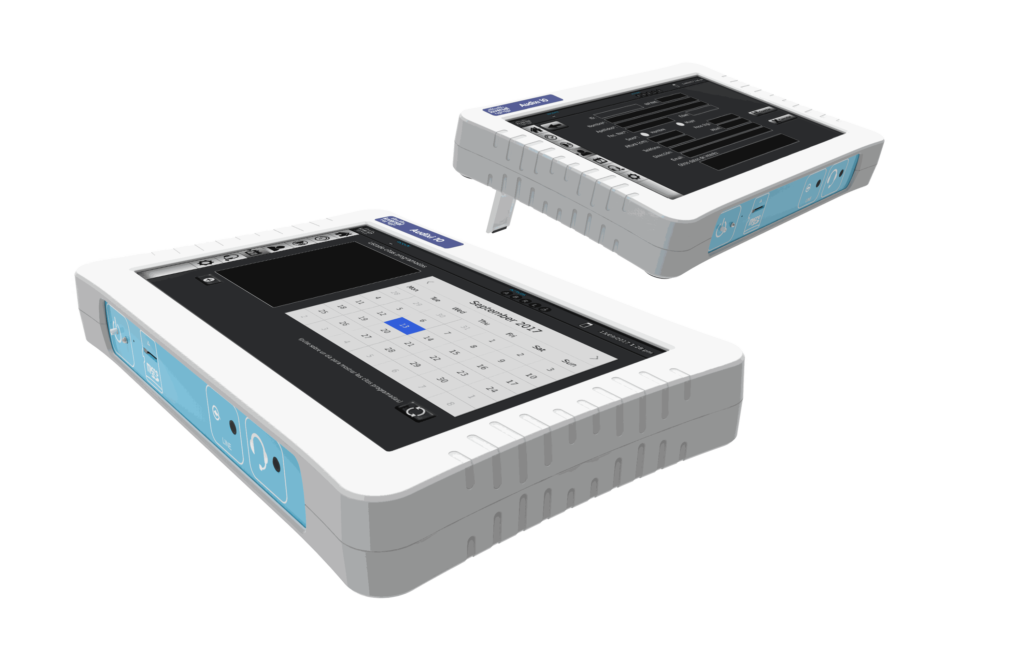In order to maintain adequate hearing, it is important to schedule regular audiometries or hearing tests. Below is an explication of what they are, and the types of tests that can be done to determine the state of your hearing health.
Detecting hearing problems with audiometric hearing tests
Audiometric hearing tests evaluate the capacity of a person’s auditory system. They allow professionals to determine the subject’s range of hearing and their ability to perceive different frequencies on the audio or tonal spectrum.

What types of hearing tests are there?
There are two main methods of screening for auditory health:
- Objective: these tests register electrical activity in different parts of the auditory pathway. This type of test does not require the subject’s participation.
- Subjective: contrary to objective tests, subjective screening methods require the subject’s cooperation and participation.
There are currently two types of subjective hearing tests:
- Speech testing: this tests the subject’s ability to hear a series of different words at different volumes through headphones. The finality is determine the volume at which the subject can hear and understand speech.
- Pure-tone audiometric tests: There are different types of pure-tone tests:
- Liminal or threshold pure-tone audiometry: this test determines the subject’s capacity to perceive a specific frequency or volume. Headphones are used to determine their auditory threshold – marked by the last sound that the patient hears – and therefore represents the minimum hearing level. Moreover, if there is evidence of hypoacusis (hearing loss), this test can help with the topographic classification of the type of loss presented by the subject.
- Supraliminal pure-tone test: this test is used to evaluate the subject’s hearing disturbances and fatigue above their threshold of hearing under three parameters: intensity, frequency and duration. Various tests can be performed to detect other hearing problems.
Pure-tone audiometric tests are only possible with the aid of an audiometer, an electronic device designed specifically to conduct audiometric hearing diagnoses. Their main purpose is to determine whether the test subject presents any hearing loss and to pinpoint any disturbances through acoustic stimulation in both ears.
This medical instrument provides visual results that are displayed on a chart called an audiogram using a Cartesian coordinates system marked by frequencies (Hz) on the horizontal axis and intensities (dB HL) on the vertical axis. The results for the right ear are displayed in red; those for the left ear in blue.

The audiometer used in a hearing test must comply with the IEC (International Electrotechnical Commission) manufacturing standards and meet the performance and calibration requirements established by the ISO and ANSI standards, as set out in the AEDA (Spanish Audiology Association) guide to pure tone hearing tests: Guía de Práctica Clínica de Audiometría Tonal de la Asociación Española de Audiología (AEDA).
The Kiversal Audixi 10 audiogram complies with standard IEC 60645-1 for equipment for pure-tone and speech audiometry.


0 Comments
2 Pingbacks